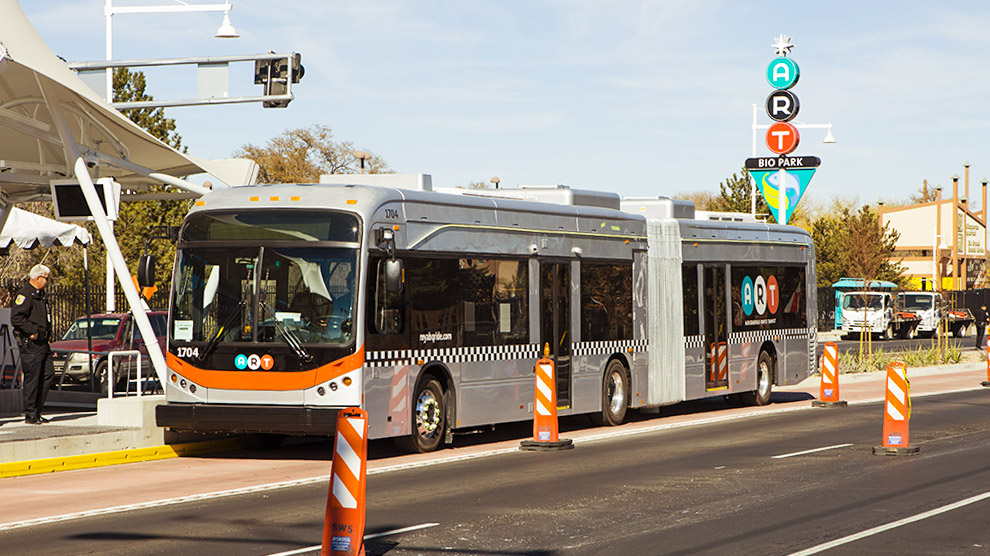Electric buses purchased for the Albuquerque Rapid Transit project have been returned and a lawsuit initiated, and polluting diesel buses have now been ordered from Canada. It’s hard to decide what is more troubling: city transit’s inability to implement the electric buses or its unwillingness.My BS radar went off when cracked plastic panels were cited alongside limited range and mirror clearances at platforms—all minor complaints—at a press conference with the mayor. Transit officials’ lack of love was palpable, as they petulantly demanded that BYD address every glitch before they could be bothered to start service.Conventional buses use the same engines as semi-trucks while electric buses are designed for slow service on city streets—not something drivers who are used to stomping on the gas to make up time lost to loading wheelchairs appreciate. Over-accelerating an electric bus decreases its charge and this was cited as limiting range.An almost-30 mph top speed driving up steep west Central was cited as some great failure, but BYD demonstrated it could maintain this speed with a full load—frustrating for bus drivers—which is entirely appropriate and acceptable for mass transit.In September, the city commissioned a study of the BYD buses wherein mechanics inspected each bus. The Center for Transportation and the Environment (CTE) study essentially reported that the ART project covered too much turf for depot-only charging, suggesting the city simply reduce the service area, provide in-route charging or use more buses.Instead, the persistent foot-dragging of transit employees finally paid off, and the mayor was convinced to quit on the major feature of a multi-million dollar project many years and tears in the making. Inspections and photographs by city mechanics offer proof of the amateurish way in which they were conducted.Every mechanic turned in the same list of minor complaints, hilariously in the same order, cobbled together to blame for failure to implement the buses. Surface rust and a few poor welds—among the thousands that make up the frames of buses—are easily repaired. Hoses and lines “rubbing” despite being encased in three layers of DOT-approved plastic looms, rubberized grommets and shrinkwrap.Naturally, brakes needed adjustment after sitting unused all summer, but city transit showed zero interest in making adjustments—instead complaining about equipment provided for free by the federal government—perhaps because an electric bus doesn’t provide the neck-stretching acceleration so often experienced on Burque buses.Ginned-up reports noted that the wheelchair ramp wasn’t idiot-proofed with a pressure-sensitive override, as if a driver would not be operating it. The inspections and CTE study merely provided cover for not using the buses. News flash: The wheels of the bus are not pressure sensitive and will crush anything the driver runs over.In a town where a ’65 Chevy can be modded to repeatedly jump six feet in the air, they didn’t fix a few welds or break out an ohm-meter. Diesel mechanics could see the writing on the wall; once these glitches were ironed out, they would no longer be needed.ART could also make all other Central routes—and those drivers—unnecessary. While that’s good for the people of Albuquerque, it’s undeniably bad for some city transit employees.Electric buses are now the standard in cities across the globe; Volvo and Mercedes are the best, but another excellent one called Proterra is made in South Carolina. With 80 percent fewer moving parts and 80 percent less energy use, electric buses are a well-established technology when updated with inductive in-route charging at bus stops, as suggested for ART by the CTE study. Transit wasn’t interested in any other electric buses.Martha’s Vineyard recently installed an inductive in-route charging system populated by BYD buses. While BYD is a Chinese company, those buses were built in California. Replacing buses funded by a federal grant for a zero-emissions system with Canadian buses that blow copious amounts of carbon into the biosphere is climate change-denial madness.Meanwhile, city mechanics will have engines that boast thousands of wearing parts to repair and maintain—thus ensuring their continued employment. Drivers will have powerful engines to maintain timetables and roar back to the depot at Miller time while Mother Earth picks up the tab.The mayor says we will revisit electric buses when the technology catches up, but the technology has already arrived and city transit needs to catch up. The invention of safety-related excuses is most disquieting.Someone’s head should roll for this implementation failure fiasco of rejecting electric buses that are already in service all over the world. The city also spent millions—outside of federal grant funds—on a charging system that now collects dust.I call on the city to get those BYD buses back and to purchase electric vehicles for every possible application from now on; to paraphrase the movie, “Are we New Mexi-cans or New Mexi-cant’s?”
News Editor’s Note: The opinions expressed in this article are those of the author and do not reflect the views of the Weekly Alibi editorial board.



